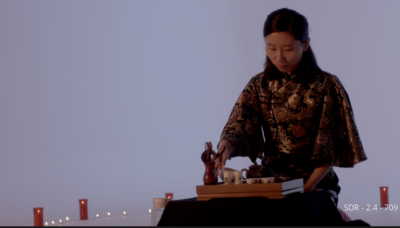Today we have prepared a very special and different material to what we usually post in our “Downloads” section. Surely lately you have heard a lot about HDR, the possibilities it offers and the new standards that are being established.
In order to shed some light on this matter, Luis Ochoa and Tommie Ferreras went out to record some tests with Canon’s C700 camera , and now we make them available to you.
Of course, in addition to the camera, two fundamental elements came into play in these tests, the DP-V2420 monitor (also from Canon) and the Mistika post-production software (developed by SGO).
If you want to know what HDR is all about you can find information in part 1 and part 2 of our HDR Guide and of course in our extensive 4K Guide.
The captured files use the XAVC codec, with 422 sampling and 10 bit depth, and have a resolution of 4096 x 2160.
As we have already mentioned before, once they were recorded, they were transferred to a Mistika to be able to color correct them. Starting from the originals, three color corrections were made, in Rec. 709 gamma 2.4, in P3 PQ (SMPTE 2084) at 1000 nits and in Rec 2020 HLG at 1000 nits. In all three cases, color grading was started from scratch, without transformations between standards. These are the three standards in which colorists will commonly have to master. 709 in SDR and PQ and HLG in HDR.
We all know that HDR greatly expands the dynamic range of the final image, but what does this really mean? When Luis and Tommie did these tests, their intention was to see how skin tones would react, the result outdoors or indoors, and what would happen to extreme colors when working with the new HDR standards. Also, after the color corrections, they wanted to be able to make fair comparisons between the different standards, using the same camera, the same colorist and the same creative intent.
In order to keep track of the “pure colors” they worked on the interiors with the X-rite ColorChecher chart.
It should be noted that in order to view the material correctly, it is essential to view it on a monitor adjusted to the corresponding standard and with a brightness of at least 1000 nits. The latter is especially important when it comes to the PQ curve, since due to the characteristics of this curve, if it is viewed on a monitor with lower brightness, clipping may appear in the whites.
If we view the PQ sequence on an SDR monitor (Rec. 709), it will look “washed out and desaturated”. If we view the HLG sequence it will look “correct”, but it will not have the intended artistic intent. Of course, the Rec. 709 graded sequence will look correct on a monitor set for Rec. 709. 709.
Therefore, these clips will help you to see the artistic possibilities of HDR and to compare the results of the different standards. As always, you can find them in our “Downloads” section under “HDR”.
For ease of downloading the tests have been downscaled to 1920×1080, but still retain the same HDR properties.
We remind you again that PQ and HLG clips must be viewed on a 1000 nits HDR monitor, otherwise they will not display correctly.
Here is also the link to Luis Ochoa’s page, where you can find more examples of different cameras color-keyed in HDR (PQ 400 nits). You will see it at the bottom of the page, in “HDR Coil”.
From 709 Media Room we also encourage you to share your own tests with the rest of the users in order to discover more about the incipient HDR. You can do it through info@709mediaroom.com.





